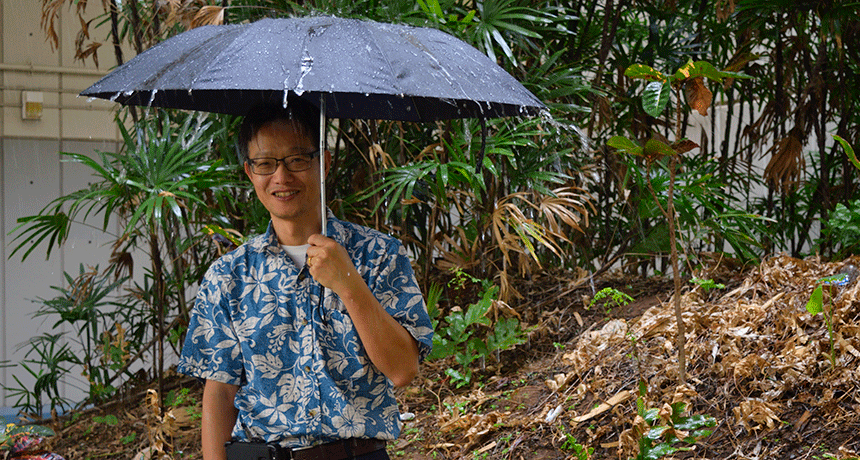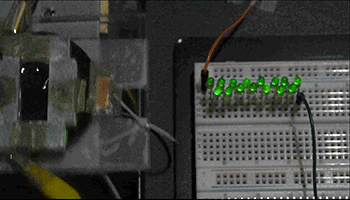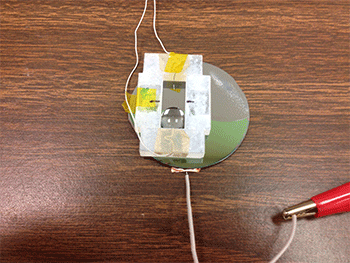This hydropower harnesses energy one water drop at a time
The friction generated by a single droplet can light 15 LEDs

David Ma, an engineer at the University of Hawaii, led a team that developed a method to harvest electricity from the friction of a water droplet rolling across a surface.
UH Staff
By Ilima Loomis
A rainy day can be a chance to recharge — literally. While you relax on the couch with a movie, the raindrops falling on your windows might one day provide the power for your TV. This is the idea behind an invention that harvests energy from water, one drop at a time.
The technology is based on the triboelectric (TRY-boh-ee-LEK-trik) effect, explains David Ma. The triboelectric effect is the generation of an electric charge due to friction. An engineer at the University of Hawaii in Manoa, Ma knew that it’s possible to generate electricity by rubbing two things together. So, he thought, “Why don’t we use water?”
A drop of water sliding across a surface coated with two different materials would generate enough friction to create an electrical charge. By placing metal wires that the droplet touched as it moved, it should be possible to harvest electricity, he reasoned.

“It’s a very simple idea,” Ma says. “We basically used a water drop as an electrode.”
And it worked. In fact, the researchers lit up 15 LED bulbs with a single moving water droplet.
Ma was an author on a December paper describing the technique. It appeared in Scientific Reports.
This is not the first time scientists have captured electricity from water-generated friction. Earlier experiments, though, harvested the charge induced in a surface by a sliding drop of water. There, the surface had acted as an electrode. This is different. The energy of friction is being harvested from the water itself.
And that proved to be a clever innovation.
“It turns out,” Ma says, “the charge in the water drop is way more than the charge induced in the other electrode.” In fact, his team’s prototype generated almost 100 times more power than previous experiments from a single droplet of water.
The technology could someday power phones, sensors or other small electronics, says Christopher Oshman. He works as a mechanical engineer at the Colorado School of Mines in Golden. “This work is a step toward harvesting the energy of moving objects all around us, including ourselves, to power the electronic devices we use every day,” he says.

Ma has shown that the technology can work in a lab, Oshman says. Next, the Colorado researcher would like to see it tried on a larger scale, such as on an umbrella.
Another step will be to create prototypes, or models, that test the technology under real-world conditions. For instance, maybe it could be turned into a coating that would extract power as rain drips down a building or hits car windows. Triboelectric-energy harvesting also could charge electrical devices far from conventional power sources. Think of sensors placed along a highway or stream.
“We can use salt water,” Ma adds. “Maybe even blood.” That suggests that one day this technology might even help power biomedical devices, such as heart pacemakers. Currently, these are battery-powered. Think about it: Patients now need surgery every time those batteries run out of power. In the future, the natural flow of fluids in the body might be tapped to power such devices.
This is one in a series presenting news on technology and innovation, made possible with generous support from the Lemelson Foundation.







